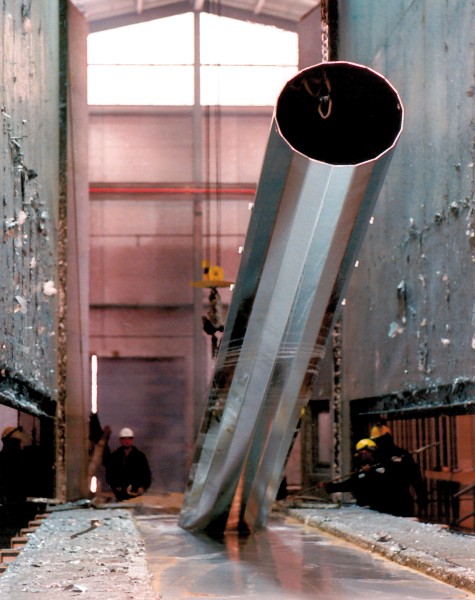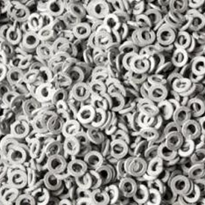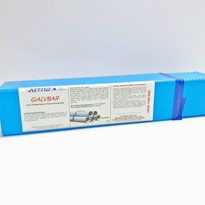For the technically minded; the zinc coating serves as a sacrificial anode, so that it cathodically protects exposed steel. Simply put, even if the coating is scratched or abraded, any exposed steel is protected from corrosion by the remaining zinc — an advantage absent from paint, enamel, powder coating etc. Galvanising is also favoured as a means of protective coating because of its low cost, ease of application, and comparatively long maintenance-free service life.
How is it applied?
Galvanising is applied in specialised facilities, using a standardised process and trained operators. Steelwork enters the facility and moves through the stages of jigging, cleaning, fluxing, dipping, quenching, and dressing. The packaged work is then stored in the 'white work' area prior to dispatch.
Each of the steps is important in ensuring a quality outcome for the end-user, process chemistry is vital. At Industrial Galvanisers, the composition of process chemicals — including the zinc in the bath (or kettle) — is regularly tested in our NATA-certified laboratory. Adjustments are made to maintain chemistry within defined boundaries.
After tagging for identification, work is hung on jigs that are used to carry the product through the process using overhead cranes. Work is suspended from the jig at an angle to allow the molten zinc to flow off the surface before solidification; this creates a better surface finish and minimises the amount of dressing needed.
Also at the jigging stage, inspection is carried out to ensure that all hollow sections have holes in them to allow for venting (of trapped air) and draining (of liquid chemicals and molten zinc). Ineffective ventilation and drainage can lead to distortion of the product , danger to the operators and incomplete coverage of the surface. When designing and fabricating parts, it is vital to apply design guidelines that result in good draining and venting of closed sections.
Full jigs are immersed in a tank of hot caustic solution (70-90°C), which remove surface grease, oil, and most types of paint from the surface. Once removed from the caustic, steel items are rinsed and placed into one of several acid tanks which remove millscale, rust, and, if the steel has been previously galvanised, any remaining zinc.
The time that the steel is immersed in the acid is important, as over-pickling may result in surface pitting and a thicker, matt coating. One benefit of this is that thicker zinc coatings tend to have a longer life. When pickling is complete, the surface of the steel reacts quickly with air as it is withdrawn from the acid bath and a thin oxide layer begins to form. The steel surface and cavities must dry before entering the molten zinc bath, and this extends the time available for the oxide to form. The metallurgical reactions between the molten zinc and the steel surface will not occur if oxides are present on the steel surface. To overcome this, the clean, reactive steel is immersed in a pre-flux solution which contains zinc ammonium chloride and wetting agents, at a temperature of about 70°C. The pre-flux removes any oxide film that has formed on the steel after acid cleaning, and prevents further oxidation before galvanising.
After cleaning and fluxing, the dry steelwork is immersed in the galvanising bath ('kettle') where the galvanising reaction occurs in molten zinc at 445-465°C. A series of zinc-iron alloy layers are formed, which are metallurgically bonded to the steel. To allow the reactions to complete, steelwork stays in the bath until its temperature reaches that of the molten zinc. The immersion time varies; several minutes for light articles, and longer periods for large structural members.
Once zinc oxides (know as ash) form and are removed from the surface, the jig is withdrawn from the bath at a controlled rate and surplus molten zinc drains from the angled work. The outer layer of zinc solidifies to form a relatively pure and shiny outer zinc coating.
The freshly galvanised zinc surface will oxidise rapidly in moist air and white 'storage stain' can form. To delay this process, galvanisers normally quench items in a diluted potassium dichromate solution that applies a chromate film to the zinc surface. Jigged items can be left to cool naturally (air quenched) and this may be required if the work is to be further processed such as for powder coating. Storage stain is more prevalent in wet weather; relative humidity is high and rain washes the quench solution off of the galvanised work (which is generally stored outside) before the protective patina has time to form. Good storage and packing strategies can reduce the formation of storage stain.
In the last stage of the process, the galvanised steelwork is removed from suspension and a visual inspection of the work is carried out. Any zinc spikes, dags, and rough areas are dressed. Spikes and dags form naturally as the molten zinc solidifies but jigging components at an angle reduces their incidence and severity. An advantage of hot-dip galvanising is that visual inspection can show whether the coating is continuous. Defects such as uncoated areas from incorrect surface preparation can be found easily. Once the product has passed inspection the finished work is packaged and then stored before dispatch.
What are the benefits of galvanising?
Galvanised steel has a tough, metallurgically bonded protective coating of zinc alloy; it is durable, combining long life with minimal maintenance and low whole-of-life cost in a tried and tested corrosion protection system.
The key benefits of hot-dip galvanised zinc coating are:
- Reliability (a thick, complete and easily inspected coating);
- Dependability (electrochemical cathodic protection for the entire component or structure);
- Predictability (forecast life based on known corrosion rate of zinc).
Galvanised steel exhibits an attractive finish that is in increasing demand for its low maintenance, UV-immune properties, and easy integration with other materials. It also provides a superior foundation for a decorative top coat that provides colour, increased chemical resistance, and synergistically extended life.




